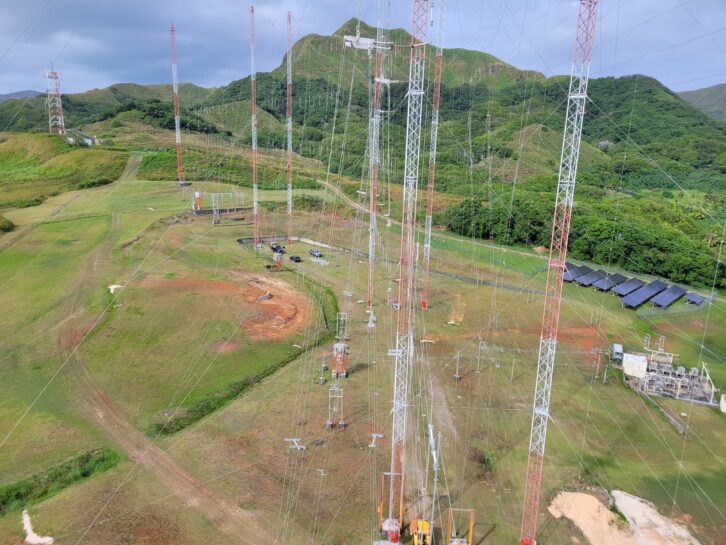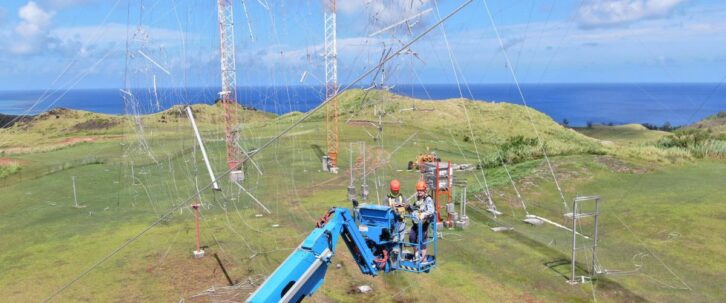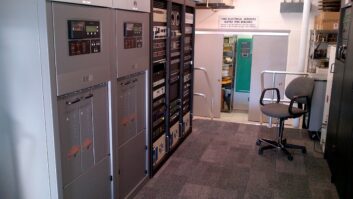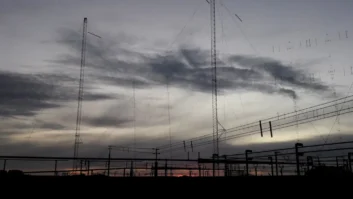If you’re an avid Radio World reader, you know that we love to highlight unique radio facilities, whether they be local or abroad. If you happen to love that sort of content, you’re in luck!
Broadcasting since 1954, Trans World Radio, or TWR, is a Christian non-profit organization that collaborates with radio stations to spread the gospel via local FMs, mediumwave or high-powered AMs and shortwave transmitters.
According to its website, TWR’s programming is broadcast in 200-plus languages on air, online and on the ground in 190 countries. It is celebrating its 70th anniversary this month.
With such an extensive résumé, TWR was bound to have at least a few unique transmitter sites. One such site that we’ll share with you here can be found “Where America’s Day Begins,” floating just above the equator in the western Pacific Ocean.
In Micronesia, TWR’s shortwave member station on Guam, KTWR, serves listeners across most of Asia, spanning Siberia to India to Indonesia.
The KTWR site has three transmitters, one 100 kW HC100 and two 250 kW TSW2250Ds. The six TCI curtain antennas (one 2x2x1.5, one 2x3x.5 and four 4x4x1) were installed during various years from 1977 to 1998. Radio World is told that TWR installed the antennas and transmitters with its own personnel and volunteers.
Mike Sabin, the Asia broadcast technical operations director for TWR, shared the neat picture below featuring KTWR’s transmission facilities.
“The antenna switch matrix shown at the right in the photo is a custom system made from HCJB field switches,” said Sabin. “We installed it in 2014.”
Sabin said the KTWR site has three solar arrays with a total power capacity of 87 kW.

The broadcast site sits in Malesso — Guam’s southernmost village. Malesso skirts the island’s southern shoreline on a long strip of land between mountains and sea, which provides interesting broadcast capabilities.
“Being on the foot of a mountain and close to the ocean has helped the broadcasts be easily heard all over Asia,” said Sabin.
Now, the location of the pristine site we see above hasn’t been without its challenges. The island of Guam — a U.S. territory since 1898 — is no stranger to natural disasters and inclement weather. Recently, in 2023, Typhoon Mawar brought widespread flooding and 140 mile-per-hour winds — equivalent to a Category 4 hurricane — when it struck on May 24, wreaking a whopping $112 million in damage. Mawar is recorded as the strongest typhoon to hit the territory since 2002.
KTWR was not immune to Mawar’s harsh winds, but did fare a little better than expected, according to Sabin.
“All of the antennas had varying amounts of damage, [but] the buildings and the transmitters fared well,” said Sabin. “One antenna was a complete loss, [but the] towers were all fine.”
Since the typhoon made landfall last May, Sabin said a new TCI 611 4x4x1 curtain antenna has been purchased and will be installed this spring.

After nearly two months of disrupted programming, the shortwave station resumed its regular on-air schedule on July 15. Prior to that, three other shortwave broadcasters in Asia aired some of KTWR’s usual programming while the team on Guam repaired the wrecked antennas.
Sabin’s remarks on KTWR’s recovery last July serve as a strong reminder for stations to take emergency preparedness seriously … and to expect the unexpected.
“While we do keep an updated contingency plan for broadcast coverage, every catastrophic event we have had over the past two decades has proven to be unique,” he told TWR. “This particular event unfortunately took the prize for the longest complete outage at KTWR, ever.”
The author was born on Guam and lived through six typhoons, the last of which was Typhoon Pongsona in 2002, a Category 4-equivalent super typhoon.







